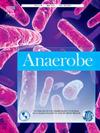Zebrafish as an in vivo model to study the pathogenicity of Clostridioides difficile clinical strains
IF 2.6
3区 生物学
Q3 MICROBIOLOGY
引用次数: 0
Abstract
Objectives
Clostridioides difficile is a major cause of nosocomial diarrhea, and its virulence is typically attributed to the production of toxins. However, other genomic factors may contribute to its pathogenicity. To study the in vivo aspects of C. difficile infection, various animal models have been employed. Zebrafish (Danio rerio) offers several advantages over mammalian models, but there are still few studies using it to evaluate C. difficile infection. Here, we aimed to explore in vivo virulence differences among clinical strains by employing the zebrafish embryo model using eight sequenced C. difficile isolates with distinct genomic profiles.
Methods
Embryos were microinjected with bacterial suspensions, and mortality and cardiac edema were monitored over 96 h. Survival and cardiotoxicity were assessed and correlated with whole-genome data and clinical outcomes.
Results
Two strains exhibited distinct pathogenic effects: HC48 (ST42) caused significantly increased mortality (p < 0.0001), and HC132 (ST669) induced cardiotoxicity in 20 % of embryos. Surprisingly, the hypervirulent control strain NAP1/027 did not produce enhanced virulence in this model.
Conclusion
While zebrafish embryos showed promise for distinguishing strain-specific virulence, limitations such as colonization capacity and host–microbe interactions suggest that further research is needed to validate this model for C. difficile virulence testing.
以斑马鱼为体内模型,研究难辨梭菌临床菌株的致病性。
目的:艰难梭菌是院内腹泻的主要原因,其毒性通常归因于毒素的产生。然而,其他基因组因素可能有助于其致病性。为了研究艰难梭菌感染的体内方面,采用了各种动物模型。斑马鱼(Danio rerio)与哺乳动物模型相比具有许多优势,但使用它来评估艰难梭菌感染的研究仍然很少。在这里,我们的目的是通过使用斑马鱼胚胎模型,利用8个测序的艰难梭菌分离株具有不同的基因组图谱,探索临床菌株之间的体内毒力差异。方法:胚胎微注射细菌悬浮液,96小时内监测死亡率和心脏水肿。评估生存和心脏毒性,并将其与全基因组数据和临床结果相关联。结果:两株菌株表现出明显的致病作用:HC48 (ST42)导致死亡率显著增加(p < 0.0001), HC132 (ST669)导致20%的胚胎心脏毒性。令人惊讶的是,高毒力对照菌株NAP1/027在该模型中没有产生增强的毒力。结论:虽然斑马鱼胚胎显示出区分菌株特异性毒力的希望,但定殖能力和宿主-微生物相互作用等局限性表明,需要进一步研究来验证该模型用于艰难梭菌毒力检测。
本文章由计算机程序翻译,如有差异,请以英文原文为准。
求助全文
约1分钟内获得全文
求助全文
来源期刊

Anaerobe
生物-微生物学
CiteScore
5.20
自引率
8.70%
发文量
137
审稿时长
76 days
期刊介绍:
Anaerobe is essential reading for those who wish to remain at the forefront of discoveries relating to life processes of strictly anaerobes. The journal is multi-disciplinary, and provides a unique forum for those investigating anaerobic organisms that cause infections in humans and animals, as well as anaerobes that play roles in microbiomes or environmental processes.
Anaerobe publishes reviews, mini reviews, original research articles, notes and case reports. Relevant topics fall into the broad categories of anaerobes in human and animal diseases, anaerobes in the microbiome, anaerobes in the environment, diagnosis of anaerobes in clinical microbiology laboratories, molecular biology, genetics, pathogenesis, toxins and antibiotic susceptibility of anaerobic bacteria.
 求助内容:
求助内容: 应助结果提醒方式:
应助结果提醒方式:


